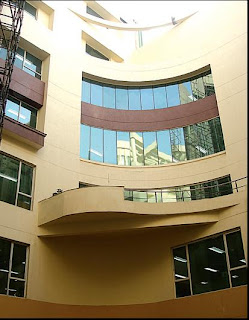In fact, this understated revolution in armed forces is of far greater significance than the much touted “Revolution in Military Affairs”  (resulting from advanced computing and communication technology). By identifying a few companies as RURs and bringing them at par with the Defence Public Sector Units (DPSU), the government has unequivocally asserted that the Indian defence has “nothing to lose, but chains.” The chains which had tied the defence sector to whims and fancies of the DPSU. It is not that the private sector was never involved with the defence production (in the period 2001-07, the private sector had got outsourced jobs worth $700 million from DPSUs and Ordnance Factories). Despite these impressive figures, the private role in defence has been confined to production of ‘nuts & bolts’ only, “the DPSUs with roughly 200,000 employees will continue to dominate this sector for some time to come,” K. Santhanam, an eminent scientist, former Project Director Pokharan II nuclear tests, told B&E.
(resulting from advanced computing and communication technology). By identifying a few companies as RURs and bringing them at par with the Defence Public Sector Units (DPSU), the government has unequivocally asserted that the Indian defence has “nothing to lose, but chains.” The chains which had tied the defence sector to whims and fancies of the DPSU. It is not that the private sector was never involved with the defence production (in the period 2001-07, the private sector had got outsourced jobs worth $700 million from DPSUs and Ordnance Factories). Despite these impressive figures, the private role in defence has been confined to production of ‘nuts & bolts’ only, “the DPSUs with roughly 200,000 employees will continue to dominate this sector for some time to come,” K. Santhanam, an eminent scientist, former Project Director Pokharan II nuclear tests, told B&E.
 (resulting from advanced computing and communication technology). By identifying a few companies as RURs and bringing them at par with the Defence Public Sector Units (DPSU), the government has unequivocally asserted that the Indian defence has “nothing to lose, but chains.” The chains which had tied the defence sector to whims and fancies of the DPSU. It is not that the private sector was never involved with the defence production (in the period 2001-07, the private sector had got outsourced jobs worth $700 million from DPSUs and Ordnance Factories). Despite these impressive figures, the private role in defence has been confined to production of ‘nuts & bolts’ only, “the DPSUs with roughly 200,000 employees will continue to dominate this sector for some time to come,” K. Santhanam, an eminent scientist, former Project Director Pokharan II nuclear tests, told B&E.
(resulting from advanced computing and communication technology). By identifying a few companies as RURs and bringing them at par with the Defence Public Sector Units (DPSU), the government has unequivocally asserted that the Indian defence has “nothing to lose, but chains.” The chains which had tied the defence sector to whims and fancies of the DPSU. It is not that the private sector was never involved with the defence production (in the period 2001-07, the private sector had got outsourced jobs worth $700 million from DPSUs and Ordnance Factories). Despite these impressive figures, the private role in defence has been confined to production of ‘nuts & bolts’ only, “the DPSUs with roughly 200,000 employees will continue to dominate this sector for some time to come,” K. Santhanam, an eminent scientist, former Project Director Pokharan II nuclear tests, told B&E.Home Campus Tour Contact Us Sitemap IIPM Think Tank IIPM National Brochure IIPM in Media India Today & Tomorrow
Strategic Alliance / Consulting / Intellectual Tic-up Partners Arindam chaudhuri GIDF Planman Consulting Business & Economy 4Ps Business & Marketing The Sunday Indian The Daily Indian Kkoooljobs.com




